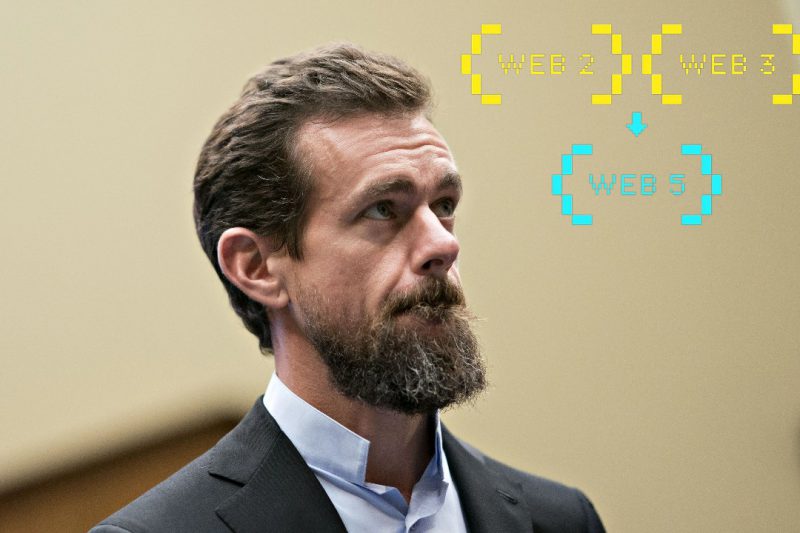The original Web 1.0 platform has evolved over the years and has now become much more than just connecting users online. For instance, the transition to Web 2.0 involved more user-generated content which enhanced sites where users share their perspectives and personal experiences. The next iteration, called Web 3.0, offered a decentralization experience and even greater utility. However, according to Jack Dorsey, Web 3.0 has a major shortcoming – it isn’t as decentralized as it is believed to be. Instead, he revealed an alternative called “Web 5”, which will be built around the founding principles of Bitcoin.
On Saturday, TBD, the business arm of Jack Dorsey’s NASDAQ listed Block, announced a new platform called Web 5. The idea behind the platform was to build a ‘decentralized web that puts you in control of your data and identity, similar to what the Bitcoin blockchain strives to achieve. According to the website:
“The web democratized the exchange of information, but it’s missing a key layer: identity… Web5 brings decentralized identity and data storage to your applications. It lets devs focus on creating delightful user experiences while returning ownership of data and identity to individuals”.
The website further explained that Web 5 would be created by taking several components from blockchain technology – such as Decentralized identifiers (DIDs), decentralized web nodes (DWN), and self-sovereign identity service (SISs). In short, DIDs enable verifiable digital identity, DWNs are an avenue for sending and recording data while SISs enable users to have sole ownership over the ability to control their accounts and personal data.
An example of Web 5’s use case, according to TBD, showed that users would be able to migrate their favorite songs or playlists to a single web node rather than have them scattered across multiple applications.
But why Web 5?
But wait, Web 3.0 isn’t launched yet so why is Jack Dorsey proposing an alternative solution? Responding to a user who asked Dorsey a similar question, the Billionaire answered that Web 3 was controlled by venture capitalists and limited partners and ‘wasn’t truly centralized’.
In one of the opening statements of the Web 5.0 document, TBD claimed that in the current web model, users do not actually own their data and are instead given accounts by
companies while their data is held captive in ‘app silos’. Web 5 aims at transitioning this control back to users.
While Bitcoin continues to bleed on the back of multiple flash crashes, its core principles remain undeterred. With Web 5 now in the works, it’s certainly encouraging to see how the space will advance especially with institutional adoption also rising across the globe.





